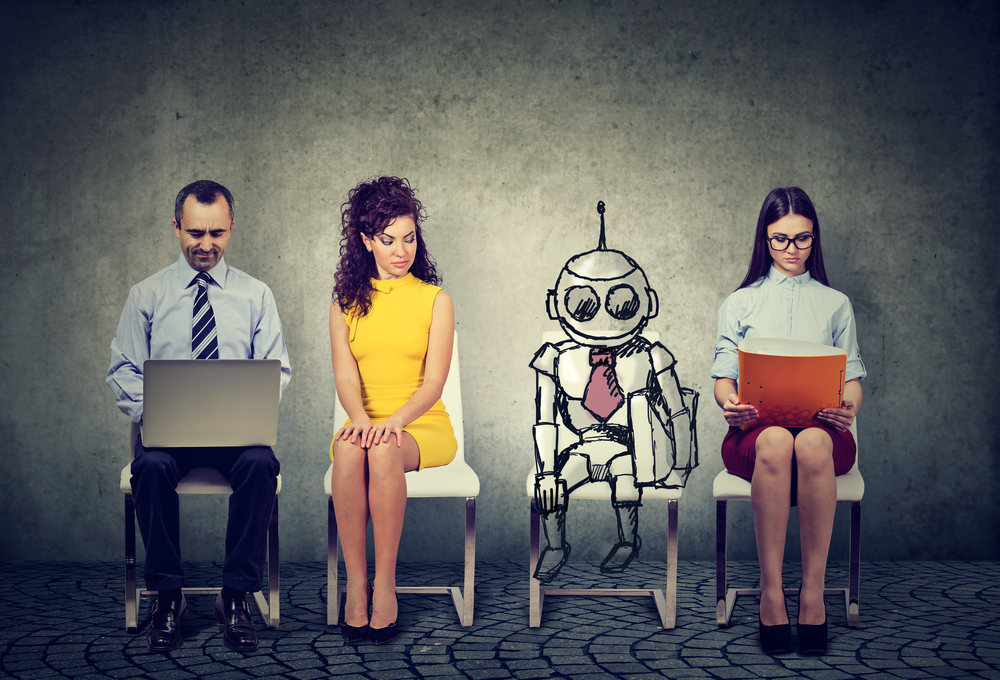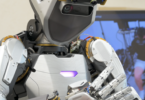Some 300 million full-time jobs around the world could be automated in some way by the newest wave of AI that has spawned large language models like ChatGPT ,according to a report on AI’s impact on employment by Goldman Sachs economists released this week. In the United States and Europe, approximately two-thirds of current jobs “are exposed to some degree of AI automation,” and up to a quarter of all work could be done by AI completely, the bank estimates.
The report was released as the Organization for Economic Cooperation and Development (OECD) was hosting a virtual conference that examined AI’s impact on work, innovation, productivity and skills.
During the March 27-30 conference the OECD discussed the findings of its own survey on the impact of AI on work. Its survey involved more than 2000 employers and 5,300 workers in seven countries. The survey covered two sectors: manufacturing and financial services.
The OECD’s survey found that job loss in the finance and manufacturing sectors has been limited so far. Over half of employers said there has been no impact on employment in their company, 25% said they had reduced headcount and 20% said they had increased it. So, although there has been some job churn AI has so far not led to major reduction in employment.
That said, employers told the OECD that they expect that to change with the maturity of the technology and its subsequent adoption, with the real impact of AI on workers starting between 2025 and 2030.
Many companies interviewed by the OECD said they had slowed hiring in areas where there is less need of human workers. They have been redeploying workers into other areas or waiting for people to retire. But that picture will look very different in the future. Some 19% of workers in finance are expected to lose their jobs and about 14% of manufacturing jobs are expected to disappear over the next 10 years due to the implementation of AI, according to the survey.
The good news for companies is that AI could reduce the skills gap in critical areas where aren’t enough trained human workers such as IT and cybersecurity. AI, could for example, allow legacy IT systems to update themselves and collect information on cyberattacks for human experts that would help them to respond to incidents within minutes rather than days,” said conference speaker Anika Schumann, a senior AI research scientist at IBM Europe.
The use of AI could also help in the management of the current workforce, said speaker Harri Ketamo, founder and chairman of Headai, a Finnish AI startup, because large language models and computing algorithms will permit companies to predict what demand will be in the near-term and long-term.
AI could also boost worker job satisfaction. One of the OECD’s key findings was that the introduction of AI to the workforce is having a positive impact on working conditions. Some 63% of users in both sectors surveyed said AI had increased how much they enjoyed their jobs, with many workers in manufacturing saying that AI has had a positive impact on their physical health and safety.
But there is a need to balance AI’s potential with risks, said the speakers.The OECD survey found that workers are concerned that AI surveillance technologies that track employee productivity will lead to abuses. The survey also found that in both sectors “young, male and university-educated workers were more likely to say they are specialized in AI and more enthusiastic about learning more” so efforts will need to be made to make sure that women and older and less skilled workers do not get left behind.
“Generative AI has massive transformation power, and we are just at the beginning of this wave of change,” said speaker Laetitia Cailleteau, Accenture’s Data & AI Europe Lead. “Obviously we need the right guardrails to be anchored quite fast to be able to support this and to ensure that as a society we use this technology for the greater good.”
Speaker Andrew Pakes, Deputy General Secretary and Director of communications and research at Prospect, which represents more than 155,000 engineers and IT professionals, said governments will have to rethink how they protect workers. “Laws about worker health and safety were designed for the physical world,” he said. “Now with the introduction of AI and other technologies there are much more discreet risks and harms.”
Pakes stressed the importance of involving workers in the changes ahead. “There is a lot of evidence across OECD countries that the introduction of AI can add value for skilled workers but for blue collar workers change is not always a good experience,” he said.
“We need to help people feel they have a stake in this,” said Pakes. The displacement that occurred the last time old industries shut down factories leading to massive unemployment it gave rise to populism and distrust. “This will only get worse with AI if we don’t make workers feel the change is about them rather than change being done to them,” he said. “Imposing top-down change is never as good as involving people.”
To see OECD case studies of AI implementation click here:
IN OTHER NEWS THIS WEEK:
CYBERSECURITY
Are Russian Hackers Working Inside Big European Companies?
Der Spiegel reported on March 31 that more than 90 former staff from Russian IT company NTC Vulkan were hired by European companies. The magazine said NTC Vulkan maintains close ties to all three major Russian intelligence services: FSB, GRU and SWR. According to Der Spiegel NTC Vulkan builds cyber programs for the security services aimed at attacking critical infrastructure facilities. Siemens said it is launched an investigation after Der Spiegel reported a former programmer from NTC Vulkan is currently employed by the company in Munich.”We take this seriously and we are looking into this,” Siemens said in a statement. “We cannot reveal any information about the identity of the person due to data protection laws.”
FOOD AND AGRICULTURE
Italy Wages War On Lab-Grown Food
Italy’s government approved a bill banning the use of laboratory-produced food and animal feed as it aims to safeguard the country’s agri-food heritage, its agriculture minister told a news conference after a Cabinet meeting. If the proposal is passed by parliament, Italian industry will not be allowed to produce food or feed “from cell cultures or tissues derived from vertebrate animals”, the bill seen by Reuters said.
GOOD Meat Gets Green Light From U.S’s FDA For Cultivated Meat
Cultivated meat is edging closer to commercialization in the U.S. as GOOD Meat becomes the second startup to secure a ‘no questions’ letter from the US Food and Drug Administration (FDA) affirming the safety of its process for growing chicken from cells, outside of the animal. The letter was issued four months after California-based startup UPSIDE Foods received a ‘no questions’ letter from the FDA for its cell-cultured chicken. The first company in the world to launch cell-cultured or ‘cultivated’ meat via a small-scale operation in Singapore, GOOD Meat (the cultivated meat division of Eat Just) has just installed a 6,000-liter bioreactor for cultivated meat at a new facility in Singapore, which is nearing completion. It plans to produce cultivated chicken products for the U.S. market later this year from a 3,500-liter bioreactor in Alameda, California, pending approval from the U.S. Dept of Agriculture (USDA).
FINANCIAL SERVICES
Mastercard and Visa Eye $1 Billion Deal For Brazil’s Pismo
Mastercard and Visa are among the suitors in talks to buy Brazilian Cloud-native core banking and payments platform Pismo for around $1 billion, according to Bloomberg. Pismo’s core processing platform helps banks, fintechs, and other financial institutions rapidly launch products for cards and payments, digital banking, digital wallets, and marketplaces.
To read more of The Innovator’s News In Context articles click here.







